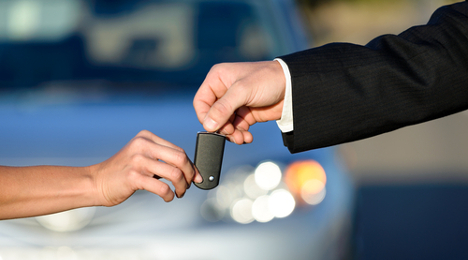Retail used-car transaction price hits Q1 record

First-quarter retail used-car transaction prices have never been higher than they were in the opening three months of 2016, says Edmunds.com.
Edmunds' Q1 2016 Used Car Market Report released Thursday morning said the average retail transaction price on a used car was $18,838, a first-quarter record.
This is up 3.2 percent year-over-year, moving past 2015 figures that saw used prices eclipse $18,000 for the first time, Edmunds said.
The firm attributes the rise in used-car prices to near-new vehicles making up a greater percentage of franchised dealer used-car sales and stronger demand for utility vehicles, which tend to be more expensive than cars.
According to the report, near-new (which Edmunds defines as vehicles 3 years old or newer) comprised 52 percent of franchised dealers’ used-car sales in Q1. That’s up from 49 percent in the same period of 2015 and 47 percent in the same period of 2014.
Jessica Caldwell, director of industry analysis at Edmunds.com, said she wasn’t surprised to see the Q1 used retail transaction price record, even amid a surplus of supply coming back into the market that has many expecting used prices to decline (although many of those projections are tied to wholesale, whereas Edmunds analysis is strictly retail transaction prices).
“Especially if you have a higher concentration of newer vehicles, you’re looking at vehicles with much higher price tags when they were sold,” Caldwell said in a phone interview Wednesday. “Used is just a function of new-car price. I think from the standpoint that prices will go lower is strictly supply and demand. You’ve got a glut of supply — prices are probably going to go down.
“But you’re talking about cars that are a little more expensive, (there is) more content in them and a lot of them are newer. So because of that, you do see prices go up on an aggregate,” she said.
“If you look in the report, when we break it down by segment, you do see that there are some segments where it’s flat to negative. And then if you take it down by age of those vehicles, then it would start to look even (more) different,” Caldwell said. “I think it’s hard to tie a neat bow on used prices when you talk about it as an aggregate market, because there are so many nuances that the new market doesn’t see.
“But I don’t think it’s necessarily surprising — again, to look at not a wholesale (perspective), but from the retail side — that prices have climbed in Q1, because we’re talking about more expensive cars that are newer,” she said.
The average age of a used car retailed during Q1 was 4.5 years, down from 4.7, Edmunds said. And the vehicle age brackets to see the biggest increases in percentage of the used-car market were 1- and 3-year-old vehicles.
“With the average age of vehicles on the market ratcheting downward, it is no surprise to see a majority of vehicle categories experiencing a bump in values,” Edmunds said in the report.
“High consumer demand for utility and pickup segments, however, are keeping small car values at bay,” it adds. “On the other hand, we see large car prices trending upward with an increased share of Dodge Charger and Chrysler 300 sales helping to pull the segment’s values upward.”
The report’s graph that breaks down the Q1 price changes by vehicle segment shows truck and utility segments dominating the top of the list of increases.
Coming in at No. 1 was the compact truck, whose average used transaction price was up 11.8 percent year-over-year. It was followed by the midsize traditional SUV, whose prices were up 11.4 percent.
Large cars were third (up 9.3 percent), but two truck/SUV segments rounded out the top five: large traditional SUVs (up 8.5 percent) and large trucks (up 7.2 percent).
Premium luxury SUV prices climbed 7.1 percent.
Increases for the next 12 segments ranged from about 2 percent to 5.5 percent.
As Caldwell mentioned, there were two segments where prices fell (compact cars, down 1.5 percent; subcompact cars, down 5.7 percent) and three where prices were relatively flat (large crossover SUV, up 0.6 percent; midsize cars, up 0.4 percent; premium luxury cars, up 0.1 percent).

 View The Latest Edition
View The Latest Edition

